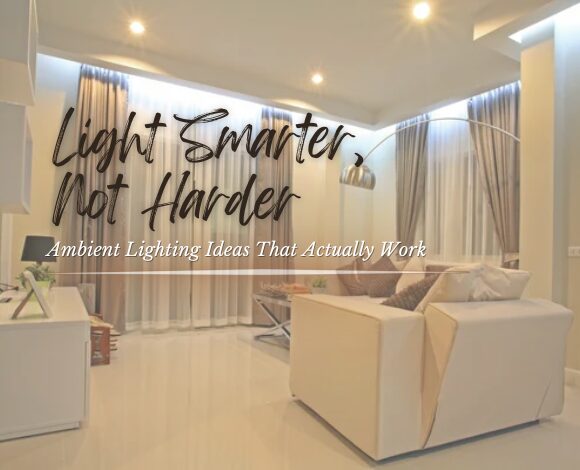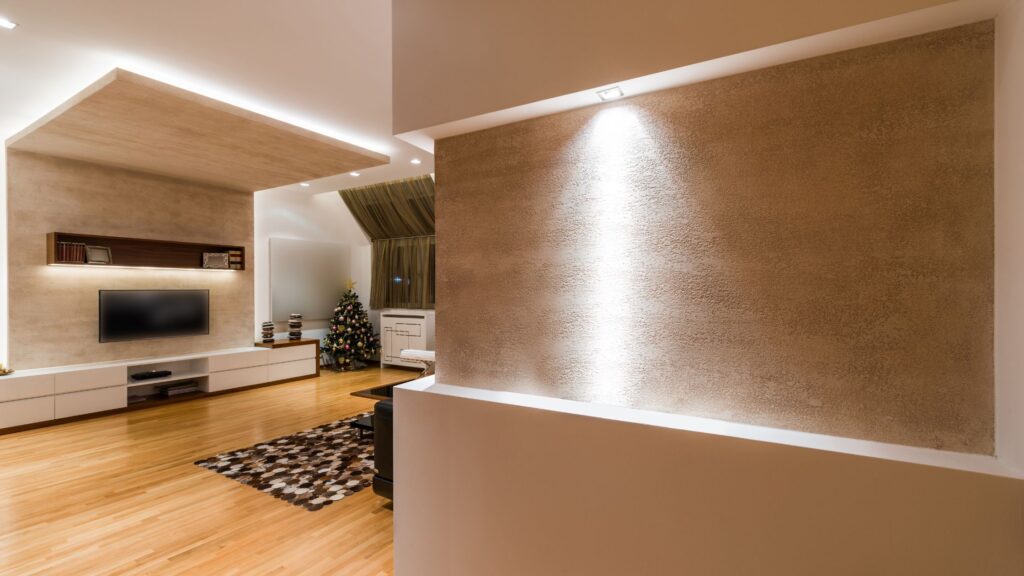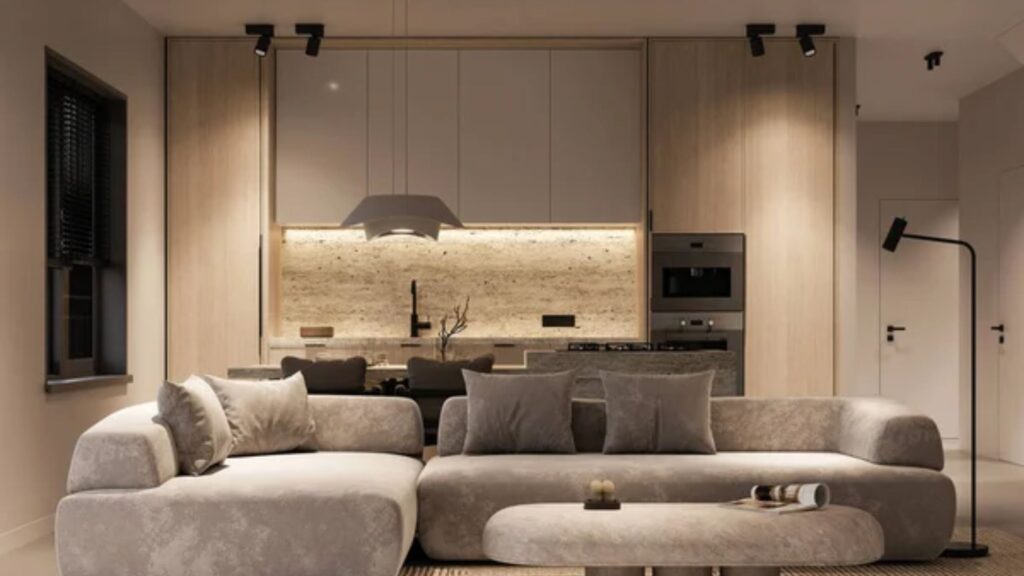Light Smarter, Not Harder: Ambient Lighting Ideas That Actually Work

Ambient lighting can transform a space more than furniture or paint ever could. It sets the tone, softens the mood, and brings depth to every corner—without shouting for attention.
But getting it right doesn’t mean overhauling your home or hiring a designer. The best lighting ideas are often the simplest ones: easy to install, flexible to use, and smart enough to adjust with your day. If you’ve been relying on a single ceiling fixture or harsh white light, it might be time to rethink how your home feels after sunset. Let’s explore practical ways to create a more welcoming glow—without the hassle.
Why Ambient Lighting Matters in Everyday Spaces

Ambient lighting does more than just light a room. It’s the base layer that influences how you feel in your home. A well-lit space can improve your mood, reduce eye strain, and help you wind down or focus depending on the time of day.
More Than Just Visibility
Good lighting isn’t about flooding a room with brightness. It’s about creating balance and atmosphere. Ambient light fills a space evenly, removing harsh contrasts while setting a soft, welcoming tone that complements other design elements.
The Psychology of Light
Light affects more than what we see—it shapes how we feel. Warmer tones (around 2700K) naturally support relaxation and are ideal for evenings, while cooler tones (5000K and above) mimic daylight, helping with concentration during work or chores. Matching lighting temperature with your daily rhythm can improve sleep quality and productivity.
Common Mistakes to Avoid
Getting ambient lighting wrong is easier than it seems. Here are a few things to skip:
- Relying only on overhead lighting: This often leads to flat, uninviting spaces.
- Using non-dimmable bulbs everywhere: Limits flexibility for different times of day.
- Mixing too many color temperatures: Creates visual confusion and discomfort.
Making small adjustments—like adding a side lamp or switching to warmer bulbs—can dramatically change how a space feels, without needing a major overhaul.
Simple Ways to Add Ambient Lighting at Home

Creating a well-lit space doesn’t require a huge investment or technical know-how. With just a few thoughtful changes, you can layer light to bring warmth, clarity, and calm into your rooms.
Use Layered Light Sources
The key to ambient lighting is layering. Relying on a single ceiling fixture flattens a room, while mixing different sources adds dimension.
- Overhead fixtures offer general coverage.
- Wall sconces bring soft, mid-level light.
- Table and floor lamps add warmth to corners and seating areas.
- LED strips can backlight furniture or shelves for subtle glow.
Combining these elements allows you to adapt the mood as needed—bright for productivity, low and warm for relaxing evenings.
Add Dimmable and Adjustable Fixtures
Having control over brightness is essential. Dimmable lighting lets you shift the mood instantly, especially in multi-use spaces. It’s a subtle upgrade that makes a noticeable difference in comfort and flexibility.
Smart lighting brands, including Govee, offer dimmable options that work through mobile apps or voice assistants. With these, you can set lighting routines that match your daily rhythm—without touching a switch.
Whether you’re adjusting light for a calm evening or brightening a space for morning routines, the ability to fine-tune brightness makes your lighting more responsive and useful.
Natural Light + Artificial Light Harmony
Work with the sunlight your home already gets. Use sheer curtains or light-colored blinds to soften daytime glare while allowing natural brightness in. Then, as the sun sets, switch to gentle indoor lighting that mimics its color temperature. This gradual shift helps your body transition smoothly between day and night.
Tech-Savvy Solutions That Simplify Lighting Control
Modern lighting isn’t just about style—it’s about convenience. Smart features can make it easier to personalize your space, automate routines, and get the exact atmosphere you want without any hassle.
Smart Bulbs and Plugs
Smart bulbs are one of the easiest upgrades you can make. They fit into standard lamps and fixtures but offer full control through your phone or voice assistant. Paired with smart plugs, you can automate even non-smart lamps to turn on or off with a schedule or command.
This setup is great for setting routines—like dimming your lights in the evening or brightening gradually in the morning—without touching a switch.
RGB and Color-Shifting Light Options
Mood lighting isn’t just a trend—it helps tailor spaces to how you feel or what you’re doing. Here’s how different tones can work:
- Warm Amber (2700K–3000K): Great for winding down in bedrooms or reading corners.
- Cool White (4000K–5000K): Helps with focus in kitchens, offices, and work zones.
- Dynamic Colors: Perfect for gaming areas, celebrations, or changing seasonal decor.
Color-shifting bulbs or strips let you change the atmosphere instantly—no new fixtures needed.
LED Light Strips for Flexibility
LED strips are one of the most adaptable lighting tools. You can tuck them behind headboards, run them under cabinets, or wrap them around shelving to add a subtle glow or bold color shift.
Smart options, like those offered by brands such as Govee, make setup simple and control effortless. With features like app-based customization and color scenes, these strips allow you to tailor lighting to your space, mood, or routine—no complicated installation needed.
Room-by-Room Lighting Tips That Work

Each area in your home has its own purpose, which means lighting should support how that space is used. From relaxation to productivity, small changes in ambient lighting can completely shift how a room feels.
Living Room
This is where you gather, unwind, and often multitask. A flexible setup works best. Use a mix of overhead lights and side lighting to avoid flat or harsh brightness. Dimmable bulbs or lamps with warm tones create a cozy atmosphere, especially in the evenings.
Bedroom
Your bedroom should invite rest. Start with soft lighting around the bed—like wall-mounted sconces or LED strips behind the headboard. Keep brightness low and tones warm, especially after sunset. Avoid cool white lights, which can disrupt your wind-down routine.
Kitchen and Dining
Task lighting is important here, but it doesn’t have to be cold or sterile. Try layering bright under-cabinet lighting with softer overhead fixtures or pendant lights. During meals, a dimmable centerpiece light can shift the mood from prep to dining.
Outdoor Spaces
Lighting outside helps with both mood and safety. Here’s what works well:
- String Lights: Ideal for balconies or patios; soft and inviting.
- Wall Fixtures: Provide focused light near entrances.
- Pathway LEDs: Guide movement while adding low-glow ambiance.
- Smart Controls: Let you set timers or adjust brightness from inside.
These options make outdoor areas usable and welcoming, even after sunset.
Mistake-Proof Tips for Better Ambient Lighting
Ambient lighting doesn’t have to be complicated—but small oversights can make a big difference in how a space feels. These tips help keep things simple, cohesive, and effective.
Start With a Lighting Plan
Before buying anything, take a few minutes to map out your space. Think about how each area is used and what kind of light it needs. Sketch where natural light enters, and identify spots that could benefit from added warmth or depth.
Think in Zones, Not Rooms
Large spaces often serve more than one function. Instead of treating the whole room the same, break it into zones—like a reading area, a work corner, or a space to relax.
- Reading Zone: Needs directional light or soft backlighting.
- Work Zone: Should include bright, focused light with cooler tones.
- Relaxing Zone: Warmer lights, dimmable, and lower in intensity.
This approach helps each part of the room feel intentional and more enjoyable to use.
Keep Bulb Temperature Consistent
Mixing color temperatures can make a room feel off-balance. Try to stay within the same warmth range—cool tones for kitchens and offices, warm tones for living and sleeping areas. Keeping things consistent helps the lighting feel natural and calming.
Conclusion
Creating the right lighting doesn’t have to be complicated or expensive. Ambient light is all about balance—softening a room, supporting your routine, and bringing a sense of comfort to everyday spaces.
By layering light sources, choosing the right tones, and adding smart control where it makes life easier, you can transform your home without rewiring anything. It’s not about having more light—it’s about using it better. And when the lighting works, so does everything else.



